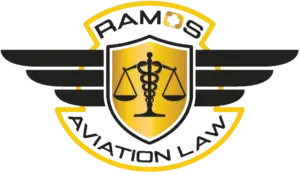Southwest Airlines Flight 2504 Forced to Abort Landing
On the morning of Tuesday, February 25, 2025, Chicago’s Midway Airport experienced a dramatic runway incursion that could have resulted in disaster. At 08:48 LT, Flexjet 560 mistakenly crossed Runway 31 Center, the active landing runway for Southwest Airlines Flight 2504, without clearance. Thanks to the quick response of the Southwest crew, a collision was avoided.
Flight 2504 Incident Details
- Date: Tuesday, February 25, 2025
- Time: 08:48 LT
- Aircraft Type: Boeing 737-8H4 (WL)
- Owner/Operator: Southwest Airlines
- Registration: N8517F
- MSN: 63594/6207
- Year of Manufacture: 2016
- Engine Model: CFMI CFM56-7B
- Fatalities: 0 / Occupants: Not specified
- Other Fatalities: 0
- Aircraft Damage: None
- Category: Incident
- Location: Chicago-Midway Airport (MDW/KMDW), Chicago, IL, USA
- Phase: Landing
- Nature: Passenger – Scheduled
- Departure Airport: Omaha-Eppley Airfield, NE (OMA/KOMA)
- Destination Airport: Chicago-Midway Airport, IL (MDW/KMDW)
- Confidence Rating: Information is only available from news, social media, or unofficial sources
The Incident: What Happened?
Southwest 2504 was cleared for landing on Runway 31 Center, while Flexjet 560 was instructed to cross Runway 31 Left and hold short of 31 Center. Instead, Flexjet proceeded across Runway 31 Center, creating a serious hazard. The Southwest pilots, maintaining situational awareness, spotted the incursion and executed an immediate go-around maneuver, ensuring safety.
ATC Communication Breakdown
Air Traffic Control (ATC) recordings reveal that Flexjet 560 initially acknowledged its instructions but later failed to stop at the designated hold-short point. Stepped-on transmissions (overlapping radio calls) may have contributed to the confusion, potentially preventing a last-minute ATC warning from being received.
ADS-B data suggests that at 08:48:17 LT, Flexjet 560 was crossing Runway 31C while Southwest 2504 was approximately 500 meters away and already climbing.
The ATC recording further shows that ground control instructed the FlexJet crew multiple times to hold short of Runway 31C, but these instructions were not followed. After the incident, ATC told the FlexJet crew:
“FlexJet 560, your instructions were to hold short of Runway 31C.”
The crew was then provided a phone number for pilot deviation reporting.
What Went Wrong?
Misinterpretation of Taxi Instructions: Flexjet 560 may have confused the hold-short line for the adjacent taxiway, leading to the unauthorized crossing.
Busy Radio Frequencies: Overlapping ATC transmissions likely prevented timely corrective action.
Crew Awareness: While the pilots read back their clearance correctly, they failed to comply in execution.
Why Situational Awareness Matters
This incident highlights the critical role of pilot vigilance in maintaining aviation safety. Quick reflexes and adherence to ATC instructions are essential to prevent near-miss events from turning into disasters. The Southwest crew’s ability to act decisively exemplifies why situational awareness is a cornerstone of safe flying.
Key Takeaways for Pilots and ATC
Double-check clearances before crossing any active runway.
Use real-time taxiway mapping tools to enhance ground navigation.
Stay alert for potential miscommunications, especially in high-traffic areas.
ATC should ensure clear and precise communication, especially when multiple aircraft are maneuvering.
Aviation safety relies on constant vigilance, effective communication, and quick decision-making. This incident serves as a powerful reminder of the importance of staying focused, confirming instructions, and always keeping a sharp eye on runway activity. Thanks to the professionalism of the Southwest pilots, what could have been a catastrophic accident was instead just a close call.
Go-Around Explained
A go-around is a standard aviation procedure used when an aircraft must discontinue its landing approach for safety reasons. This can occur due to an occupied runway, unstable approach, poor weather, or other potential hazards.
In this case, the American Airlines flight was instructed by air traffic control to perform a go-around to avoid conflict with another aircraft that had just begun its departure. The pilots followed standard safety protocols and executed the maneuver without incident.
American Airlines Flight 2246 at Reagan National
A similar situation unfolded at Washington, D.C.’s Reagan National Airport. On Tuesday at 8:20 AM LT, American Airlines Flight 2246, en route from Boston, was preparing to land when air traffic control instructed the flight to perform a go-around.
According to the Federal Aviation Administration (FAA), the go-around was ordered to “ensure separation was maintained between this aircraft and a preceding departure from the same runway.” The incident underscores how crucial proper sequencing and ATC communication are in preventing conflicts between arriving and departing aircraft.
Experts in Aviation Law
Pilot Certificate Defense
FAA Medical Denial
Aircraft Crashes
FAA DUI Reporting
Civil Penalties
NTSB Appeals
And More!
Experts in Aviation Law
- Pilot Certificate Defense
- FAA Medical Denial
- Aircraft Crashes
- FAA DUI Reporting
- Civil Penalties
- NTSB Appeals
- And More!
Contact Ramos Law
If you or a loved one has been affected by an aviation accident, Ramos Law’s team of aviation attorneys is here to help. With expertise in personal injury law and aviation-specific cases, we are committed to providing compassionate and effective legal support. Contact us today for a free consultation.


